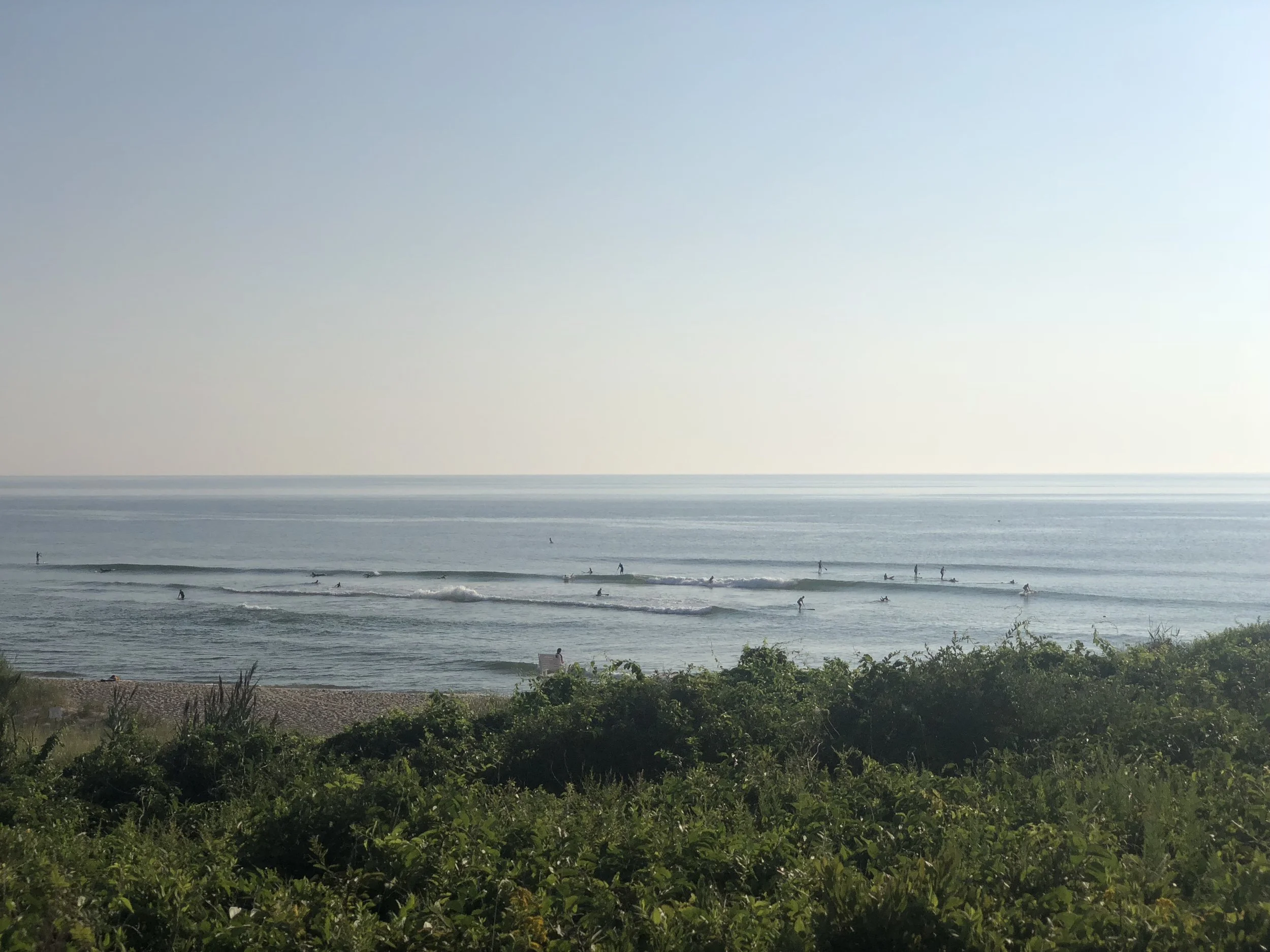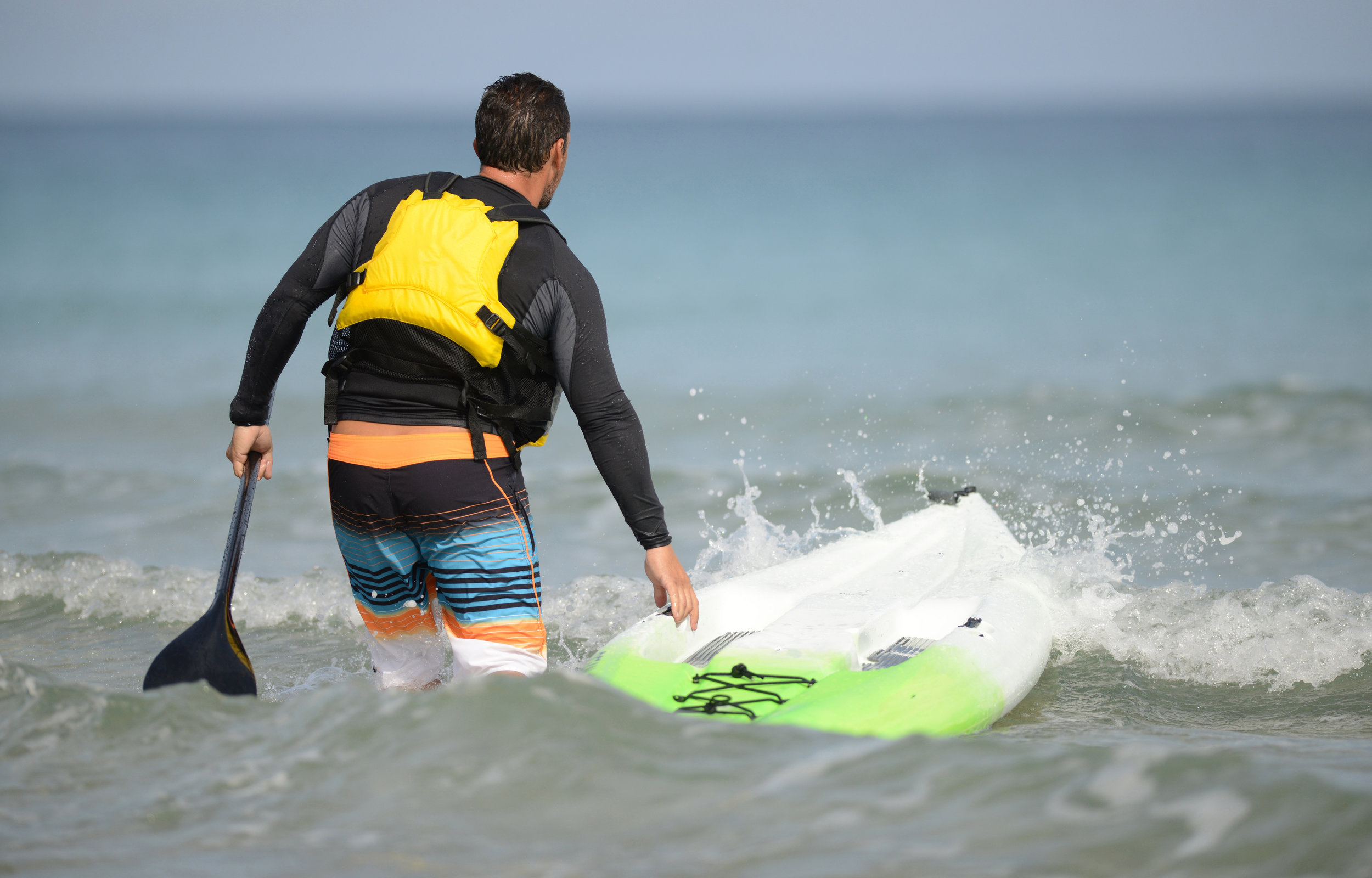1. Paddle Board Safety Gear
SUP Leash
One of the most important things to have when it comes to paddle board safety is a leash. Whether it is your first time out or you are an elite paddle boarder, this piece of equipment could make all the difference if you get separated from your board. If conditions change quickly, a leash is what connects you to your board, which is your personal flotation device that can float away from you in seconds.
The recommended leash to use is one that is a foot longer than your board, and the style depends on the water that you are paddling. If you are an ocean paddler, a straight leash is the best. This type of leash provides safety without the potential drag and tangle that might occur in turbulent white water. If you are paddling on flat water, a coiled leash is preferred since it typically stays on top of you board and will not drag in the water and slow you down. However, if you are a river paddler, you’ll need a specific type of quick release leash that prevents you from getting dragged in the event of you getting tangled in underwater rocks or branches.
PFD (personal flotation device)
The second most important item in stand up paddle board safety is a PFD. Another aspect of standup paddle boarding you should know is that the board is considered a vessel when it is used “beyond the narrow limits of a swimming, surfing, or bathing area”. In these zones, it is required by law that you wear a United States Coast Guard approved flotation device every time you paddle out past the designated “swimming, surfing, or bathing area.” Here you want to use a life jacket that provides maximum buoyancy.
Don’t be misled by many of the photos and advertising showing people on paddle boards with no safety equipment.
For more information visit the US Coast Guards, Top 10 Tips For Standup Paddle Boarding.
2. Things to Monitor Before Paddle Boarding
If you ever watch an experienced surfer before they go out in the water, they take their time and study and monitor the water, waves and wind before they jump in. Standup paddle boarding may look easy but it is important to note that it is a sport that demands awareness of dangers that may arise due to changing conditions.
Wind
The first and most important weather condition to be aware of before paddling out is the wind. Higher wind speeds create choppier waters that are dangerous for inexperienced paddlers. On days that wind speeds are high, you can find yourself battling to make any progress and balanced as opposed to paddling out to where you had planned. Therefore, it is important to check the wind forecast before paddling out. As a general rule of thumb, if the wind is traveling under 11 mph, it is typically safe for you to paddle out at any skill level. However, when wind exceeds beyond 11 mph, you should think twice before you paddle out.
Also note which way the wind is blowing as you paddle out. Is the breeze onshore or offshore? Getting blown away from shore is no fun and trying to paddle against it is a quick way to get tired and discouraged.
Swell
Swells create bigger waves and therefore harsher waters to paddle on. Getting tumbled by a wave with a paddle and board can be challenging and takes some practice. It is important to never underestimate the power of the ocean. Even if you are confident in paddling out into calm waters, waves can add a whole new level of difficulty. If a swell creates bigger waves than you are used to at your local beach, you should consider you energy level and route of paddling before you go out.
Tides
A basic understanding of tides (including rip tides or currents) and what causes them is key to ocean navigation on your paddle board. Awareness of the tides will prepare you as they can carry you very far in a small amount of time. Paddling back may take much longer than it took you to paddle out and therefore be exhausting if you don’t plan on it ahead of time. Therefore, it is important to plan your route around the tides so that you make it safely back to shore and avoid exhaustion.
Sunrise / Sunset
It is important to know the times of sunrise and sunset so that you are never paddling when it is dark. Knowledge of the times of sunrise and sunset can help you time out your paddle so that you never go out before it is light out and so you have enough time to get to shore before the sun sets.
Surfline is a great tool that has all of this information for water locations around the world.
3. Different water types
Surf
While paddle surfing, it is important to be considerate of everyone around you. Be humble and know your ability level before surfing in zones around other paddlers or surfers. The lineup is considered the “impact zone” because you are putting yourself in high danger of potential collision. Beginners should never paddle into a crowded lineup filled with other surfers, because surf skills come from experience.
To make it easier to paddle out, you can also search for the easiest way out; whether it’s a rip current to assist you to the lineup or a channel. Always use good paddle surfer etiquette by being courteous to other surfers and staying out of their way if you’re a newbie.





























